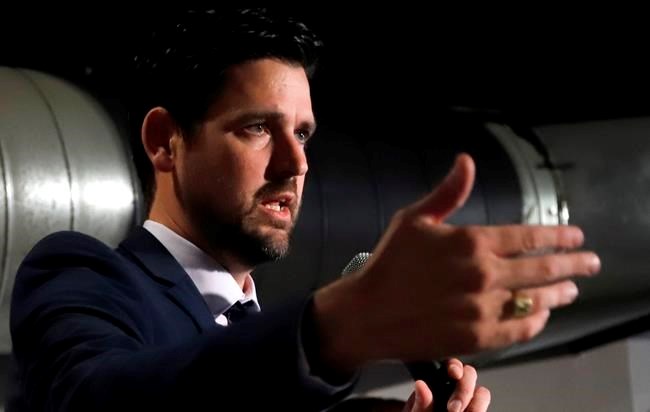OTTAWA — The federal Liberal government has unveiled plans for a massive increase in the number of immigrants entering Canada, with a goal of seeing 500,000 people arrive each year by 2025 as it seeks to address a critical labour shortage across the country.
While the plan was largely welcomed by industry groups and others, there are questions about whether it goes far enough — and whether it is even achievable, given a large backlog of applications at Immigration, Refugees and Citizenship Canada.
Immigration Minister Sean Fraser revealed the new plan on Tuesday. It puts a heavy emphasis on admitting more permanent residents with needed work skills and experience, alongside more-modest targets for family members and refugees.
"Make no mistake. This is a massive increase in economic migration to Canada," Fraser told The Canadian Press. "We have not seen such a focus on economic migration as we've seen in this immigration levels plan."
The new plan envisions a flood of new arrivals that will see 465,000 people come in from outside the country in 2023, rising to 500,000 in 2025. By comparison, the immigration department says 405,000 permanent residents were admitted last year.
Most of those new arrivals will be what are known as economic immigrants, who will be expected to fill some of the roughly one million jobs that are currently sitting empty across various sectors of the economy.
"There were a million jobs available in the Canadian economy at a time when immigration already accounts for nearly all of our labor force growth," Fraser said. "We cannot maximize our economic potential if we don't embrace immigration."
The minister also underscored the long-term stakes as Canada’s labour force continues to age, with fewer workers supporting not only those who have already retired but also vital public services such as schools and hospitals.
While the influx could put even more pressure on already scarce affordable housing in many parts of the country, Fraser suggested the new workers could actually enable the construction of more homes by addressing a shortage of tradespeople.
He added that the new plan will also try to ensure immigrants are able to easily transition into local communities by directing them to areas that already have capacity for newcomers, and with an increase in federal support and settlement services.
While most of the planned growth in immigration over the next three years will be focused on bolstering the economy, the new plan also calls for a small increase in the number of family members who will be admitted into Canada.
It also projects an overall decrease in the number of refugees, from a high of 76,000 in 2023 to fewer than 73,000 in 2025, which Fraser attributed to the government’s plan to finish resettling 40,000 Afghan refugees next year.
"In each of the last two years, we have resettled more than one-third of the total number of refugees who were settled globally," he added. "And each of the last three years, we have resettled more refugees than any other country in the world."
Despite the decrease, a representative for the United Nations High Commissioner for Refugees welcomed the government’s continued support for accepting asylum seekers fleeing war and other threats.
"The United Nations Refugee Agency welcomes Canada’s continued commitment to refugee resettlement as part of its overall immigration growth plan," UNHCR Representative in Canada Rema Jamous Imseis said in a statement.
"Refugees need life-saving solutions like resettlement, and they also make important contributions to Canada’s economy and the fabric of our communities."
The response from Canadian industry was more mixed, with the Business Council of Canada arguing the government’s plan didn’t go far enough in addressing the country’s unprecedented labour shortage.
"The Business Council of Canada welcomes the federal government’s plan to increase the number of new permanent residents settling in Canada over the next three years," Business Council CEO and president Goldy Hyder said in a statement.
"But with employers across the country unable to fill nearly one million job openings, bolder targets for economic-class admissions are required to tackle ongoing skill and labour shortages."
Conservative immigration critic Tom Kmiec also welcomed the plan to dramatically increase the number of new arrivals in Canada, but questioned whether the government would actually be able to meet its own targets.
Kmiec noted officials within the immigration department have 2.6 million applications sitting on their desks waiting to be processed. While around 1.6 million are requests for temporary residence, about 615,000 are from people seeking permanent residence.
"Now they're talking about trying to bring in a half a million immigrants," Kmiec said. "I just don't believe them that they're going to be able to do it. And that's completely unfair for people who are applying and hoping for a reasonable timeline to get a yes or no."
Fraser defended the government’s targets, saying he was confident that recent investments and a hiring spree in the department, along with changes to how applications are being processed, would address the issue and ensure that people arrive in a timely manner.
This report by The Canadian Press was first published Nov. 1, 2022.
Lee Berthiaume, The Canadian Press



